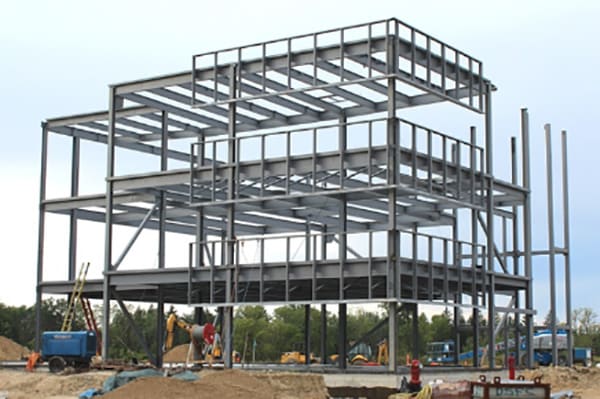In the realm of modern construction, steel skeleton frames have emerged as a pivotal element in shaping the skylines of cities around the world. These structural systems, characterized by their strength, versatility, and durability, play a crucial role in the construction of tall buildings and complex architectural designs. As urbanization continues to expand, understanding what steel skeleton frames are and how they function is essential for appreciating the infrastructure that defines contemporary living.
Defining Steel Skeleton Frames
Steel skeleton frames refer to a structural framework composed primarily of steel beams and columns. This framework forms the “skeleton” of a building, providing the necessary support for the entire structure. Unlike traditional construction methods that rely heavily on load-bearing walls, steel skeleton frames allow for more open and flexible interior spaces, enabling architects and engineers to design buildings with greater creativity and innovation.
The concept of a skeleton frame dates back to the late 19th century when the demand for taller buildings, particularly in urban areas, led to the development of new construction techniques. The steel frame system, as it is often called, revolutionized the building industry by making it possible to construct skyscrapers and other large-scale structures efficiently and safely.
Key Components and Functionality
A typical steel skeleton frame consists of vertical steel columns and horizontal I-beams or H-beams that are connected through welding, bolting, or riveting. These components are strategically arranged to distribute the weight of the building evenly across the framework. The steel used in these frames is known for its high strength-to-weight ratio, which means it can support significant loads without adding excessive weight to the structure.
One of the key advantages of steel skeleton frames is their ability to withstand various external forces, such as wind and seismic activity. The flexibility of steel allows the frame to absorb and dissipate energy, reducing the risk of structural failure during events like earthquakes. Additionally, steel is resistant to corrosion and fire, further enhancing the safety and longevity of buildings constructed with this method.
Applications in Modern Architecture
Steel skeleton frames are widely used in the construction of high-rise buildings, bridges, stadiums, and industrial facilities. In urban environments, where space is often limited, these frames enable the construction of taller buildings without compromising stability or safety. The design flexibility afforded by steel skeleton frames also allows for the creation of iconic structures with unique shapes and forms.
One of the most notable examples of steel skeleton frame construction is the Burj Khalifa in Dubai, currently the world’s tallest building. The Burj Khalifa’s steel frame, combined with a reinforced concrete core, provides the necessary support for its towering height of 828 meters (2,717 feet). The use of steel in this structure exemplifies the material’s ability to enable ambitious architectural endeavors.
Sustainability and Future Trends
As the construction industry increasingly prioritizes sustainability, steel skeleton frames have gained recognition for their environmental benefits. Steel is a highly recyclable material, and many modern steel frames are made from recycled steel. This reduces the demand for raw materials and minimizes the environmental impact of construction projects.
In addition to recycling, advancements in technology are driving innovations in steel frame design and construction methods. Prefabrication, for example, allows for steel components to be manufactured off-site and assembled on-site, reducing construction time and labor costs. Moreover, the integration of Building Information Modeling (BIM) technology enables more precise planning and coordination during the construction process, further improving efficiency and sustainability.
Conclusion
Steel skeleton frames represent a fundamental advancement in the construction industry, offering unparalleled strength, flexibility, and durability. As urbanization continues to rise, these frameworks will play an increasingly important role in shaping the built environment of the future. Whether in the form of towering skyscrapers or intricate architectural designs, steel skeleton frames are at the core of modern construction, enabling architects and engineers to push the boundaries of what is possible in building design and engineering.
Post time: Aug-14-2024




